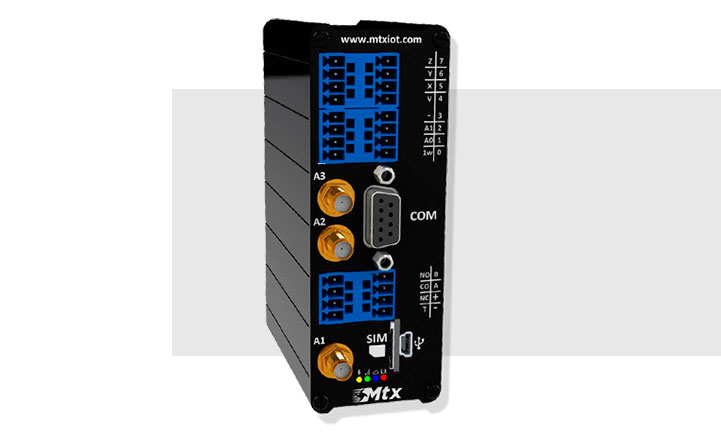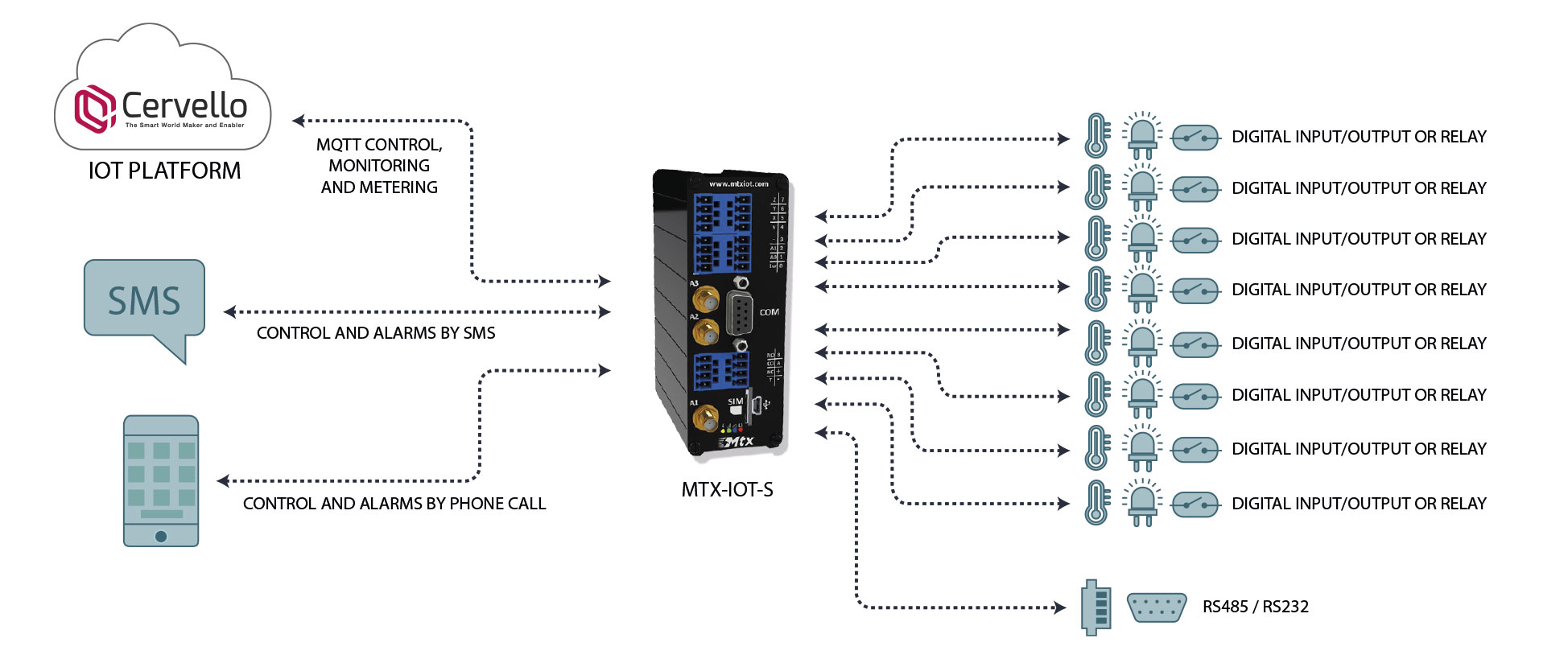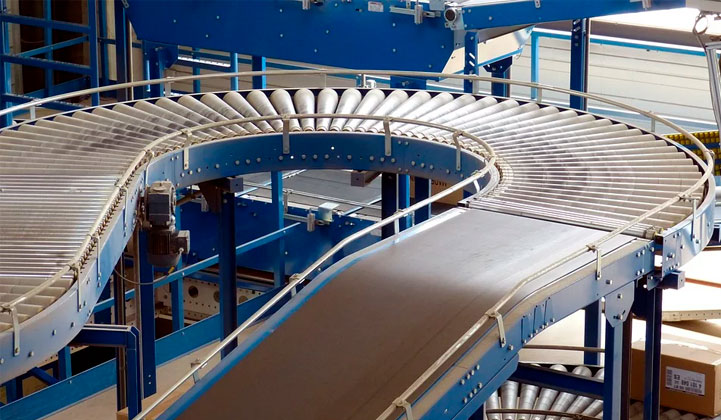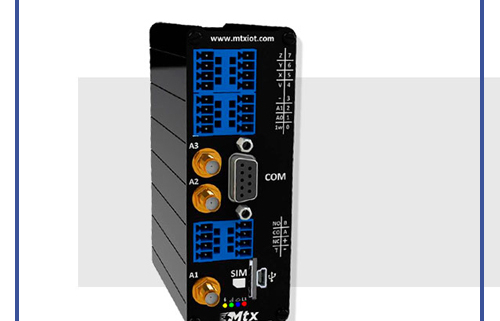New modem MTX-IoT-S with 8x digital I/O and 2x ADC


The new MTX-IoT-S is a 4G (LTE), 3G and 2G modem programmable in Java and characterized by its 8 digital inputs/outputs and 2 ADCs that convert analog signal to digital (at 4-20mA). In addition, it includes other interfaces such as RS232 and RS485, relay, USB 2.0, possibility of working in Ultra Low Power mode, backup battery, etc. All this, together with the option of adding GPS or RF communications through its expansion port, make it a benchmark in its segment, both in terms of capacity and power, as well as the number and variety of interfaces. MTX-IoT-S is fully compatible with Cervello IoT Platform and with MTX-Tunnel, which makes it a powerful gateway without the need of further programming skills.

What can I do with the new MTX-IoT-S?
Sending alarms by SMS or voice call
MTX-IoT-S is able to send alarms by SMS or voice call with changes in the devices connected to any of its 8 digital inputs.
Sending telemetry up to 8 digital inputs
MTX-IoT-S can send real-time measurements from up to 8 digital inputs via MQTT to, for example, Cervello IoT platform.
Remote management of up to 8 relays or digital outputs
MTX-IoT-S allows you to remotely manage via MQTT, Telnet, SMS or voice call up to 8 relays or digital outputs.
Automatic activation of relays/digital outputs based on the Modbus registers collected
MTX-IoT-S is capable of automatically activating or deactivating up to 8 relays or digital outputs depending on the Modbus registers collected. In addition, you can automatically notify this status change to the Cervello IoT platform using MQTT.
All this examples add up to everything you can already do with MTX-IoT, MTX-Java-T and MTX-Java-T2.

Case Study: Conveyor Belt Monitoring
In a smart environment of management, control and industrial automation, one of the key elements to anticipate failures and increase productivity is to be able to monitor the status and use of conveyor belts of any kind of sector, whether it is for logistics or manufacturing. Thanks to the data obtained, the behavior of the belts can be studied (dilatation, deterioration, irregular advance…) thus creating patterns that allow to detect failures in the process. This way, it is possible to optimize the maintenance of the conveyor belts, increasing productivity and reducing the problems arising from the wear and tear of the machines.

